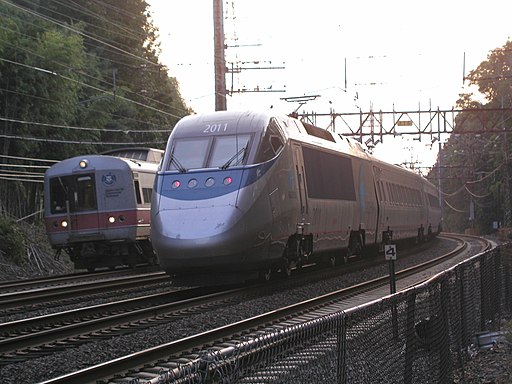
Well engineered high speed rail systems, like Japan's Shinkansen and France's TGV, comfortably rocket between cities at 200mph. President Obama's High Speed Rail Initiative ultimately aspires to bring the newest technology to the United States, developing key routes into 220mph service. Many problems lie ahead.
Building high speed infrastructure represents a long term investment. Japan began their investment in 1964; France, in 1981. Evaluations proposing to update Amtrak's already quick Northeast Corridor line sound prohibitively expensive at an estimated $151 billion. An attempt to build on the national scale would require immense federal subsidies akin to Eisenhower's National Highway project.
In response to the high cost of such development and the ensuing debate, Phillip Longman made an excellent case in Washington Monthly for improved conventional rail service in the US.
As it happens, prevailing political winds have forced more gradual development: Modifying existing Amtrak lines to 110mph, as we discussed in a previous post.
At the moment, when freight rail is booming and funds are scarce, Amtrak needs consistency more than it needs bullet trains. Practical, low cost upgrades that improve the on-time rate of trains will provide a high return for a small investment. We can determine whether the system is serving us over time, and develop it accordingly.